Cannabis cultivation is an intricate process that requires a deep understanding of the plant’s growth stages to ensure successful yields and high-quality products. From germination to harvest, each of the stages of cannabis growth presents unique challenges and demands specific care to promote healthy growth.
The cannabis plant undergoes several critical phases: the germination stage, where seeds sprout; the seedling stage, which marks the beginning of the plant’s development; the vegetative stage, during which the plant focuses on growth; and the flowering stage, where the plant produces its buds. Understanding these stages is paramount for any cultivator, as proper management at each phase can significantly affect the overall health of the plant and its productivity.
In this blog, we will explore each growth stage in detail, discuss the environmental factors that influence development, and provide essential tips to navigate common pitfalls. Armed with this knowledge, cultivators can optimize their cannabis growing experience, resulting in abundant and robust harvests.
Whether you’re a new grower or seeking to refine your existing practices, grasping the nuances of cannabis growth will enhance your skills and deepen your appreciation for our favorite plant.
Seed Stage
The seed stage is the very first chapter in the life of a cannabis plant, where it all begins. Each seed is a tiny miracle, packed with all the nutrients and genetic information needed for growth.
Structurally, seeds consist of three main parts: the seed coat, the endosperm, and the embryo. The seed coat protects the seed, while the endosperm provides the necessary food until the plant can make its own through photosynthesis.
For the seed to germinate successfully, it needs the right conditions—namely, moisture, temperature, and air. Too little or too much water, incorrect temperatures, or poor air circulation can hinder germination. Additionally, the seed’s viability plays a vital role; fresher seeds generally have a higher chance of sprouting than older ones.
The magic happens when all these elements align, setting the stage for the plant’s exciting journey ahead!
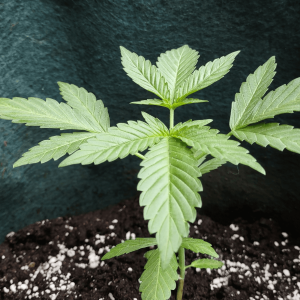
Germination Stage
Germination is where the magic truly begins for cannabis seeds. To kick off the process, it’s often recommended to soak your seeds in water for about 12 to 24 hours. This helps to kickstart the hydration process, making it easier for the seed to break through its tough outer shell.
Next up, you’ll want to create the ideal environment: temperatures should hover around 70 to 90°F (21 to 32°C), and moisture levels should be just right—not too soggy, but definitely not dry. Think of it as providing a cozy little home for your seeds.
Generally, you can expect to see little sprouts or taproots, emerging within 2 to 7 days, signaling that the germination journey is off to a great start. Remember, patience is key—every seed has its own rhythm, so give them the time they need to thrive!
Seedling Stage
The seedling stage is where your cannabis plant really starts to show its personality. During this phase, the tiny plant develops its first set of true leaves, also called “fan leaves,” which are crucial for photosynthesis.
Seedlings are typically quite delicate, often exhibiting a vibrant green hue that is a good sign of health. It’s essential to provide the right conditions: bright, indirect light is ideal, as too much direct sunlight can scorch these young leaves. Aim for around 16 to 18 hours of light exposure each day.
Nutrient-wise, seedlings don’t need much—just a light mix of nutrients like nitrogen and phosphorus, as their roots are still finding their footing. Watering should be gentle and infrequent, allowing the soil to dry out slightly between watering to prevent over-saturation.
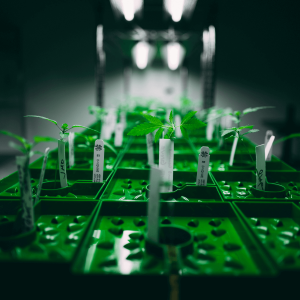
Vegetative Stage
As your cannabis plant transitions into the vegetative stage, you’ll notice some exciting changes. This phase is all about growth, with the plant focusing on increasing its height and producing a robust system of leaves. During this time, the plant can grow several inches a week, depending on the conditions you provide.
A typical light cycle during vegetative growth is around 18 hours of light and 6 hours of darkness, helping to simulate the longer days of summer. Nutrient needs ramp up significantly in this phase; cannabis plants thrive on higher nitrogen levels to support leafy growth.
This stage also presents a great opportunity to employ training techniques like topping and low-stress training (LST). These methods encourage your plant to grow wider rather than taller, which helps increase light exposure to lower branches and ultimately leads to more abundant bud production later on.
Remember to keep an eye on your plant’s growth patterns and adjust your care routine as needed—healthy plants are responsive and will flourish with the right attention!
Pre-Flowering Stage
The pre-flowering stage is an important phase that comes right before your cannabis plants enter full bloom. This is when you can start identifying some unique characteristics that signal their gender.
Typically, around 4 to 6 weeks into the vegetative stage, male plants will show small pollen sacs, while female plants will develop tiny white hairs, known as pistils, at the nodes where branches meet the stem. It’s crucial to differentiate between the two early on because male plants can pollinate females, leading to cannabis seed production instead of the prized buds you’re aiming for.
By sexing your plants as soon as possible, you can ensure that only the females are kept for flowering, ultimately maximizing your yield and quality.
Flowering Stage
As your cannabis plants transition into the flowering phase, you’ll witness the transformation from lush greenery to stunning buds. This stage develops in two key phases: early flower formation and late flower maturation. In the early days, typically 2 to 3 weeks after adjusting the light cycle to 12 hours of light and 12 hours of darkness, you’ll notice flowers beginning to form on female plants. During this period, the focus is on building bud structure and developing trichomes, which are responsible for the plant’s potency and aroma.
As flowering progresses into the late stage, which can last anywhere from 6 to 10 weeks depending on the strain, your plants will enter full bloom. At this point, it’s essential to keep an eye on your light cycles. Ensuring that your plants receive consistent light and darkness can significantly impact the quality and quantity of the buds produced.
Nutritional needs also shift during these stages; cannabis plants thrive on higher levels of potassium and phosphorus to support flower development. Regularly checking the nutrient composition in your soil and adjusting as necessary will set your plants up for success, leading to lush, mature buds ready for harvest.
Keep an eye on trichome maturity to determine the ideal time for harvesting; they should shift from clear to a milky white with some amber hues—a sure sign that your hard work is about to pay off!
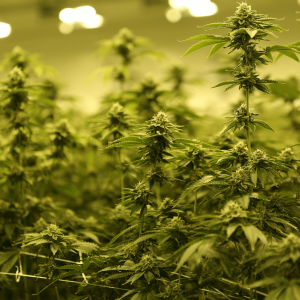
Harvest Preparation
As your cannabis plants approach the end of the flowering stage, getting ready for harvest becomes a crucial step.
One of the first indicators of readiness is the appearance of the trichomes, those tiny, glistening crystals on the buds. A closer look at these trichomes can reveal a lot; they should shift from clear to a milky white with occasional amber hues. This change signals peak potency and a more robust flavor profile.
Before cutting your plants, it’s also essential to consider flushing—this involves giving your plants plain water for about a week leading up to harvest. Flushing helps remove excess nutrients from the soil, which can improve the taste of your final product, resulting in a smoother smoke. Keep an eye on the health of your plants during this period; if the leaves start to yellow or show signs of nutrient depletion, it means you’re on the right track for harvest readiness!
Harvesting
When it’s time to harvest, there are a few techniques you can employ to ensure you get the best results. Start by gathering your tools: a sharp pair of scissors or pruning shears will make cutting the buds much easier, and a pair of gloves can help protect your hands from the sticky resin.
To preserve the plant’s quality, it’s often recommended to harvest in the early morning hours when moisture levels are higher. Grab the main stalk a few inches above the root zone and make clean cuts at a 45-degree angle. This technique promotes better drainage and respiration post-harvest.
Aim to handle the buds gently to avoid bruising and damaging those precious trichomes. After harvesting, setting your freshly cut buds in a dark space with good airflow is key for drying and curing, leading you toward that final product that you’ll be proud to enjoy.
Drying Process
Once you’ve harvested your cannabis, the next step is drying, which is crucial for ensuring your buds are of the highest quality.
The optimal conditions for drying cannabis involve a dark, cool space with low humidity levels—ideally around 60-65°F and 45-55% humidity. This environment helps to prevent the growth of mold while allowing moisture to escape slowly. Hanging your buds upside down on strings or using drying racks can facilitate even airflow.
Aim for a drying period of about 7-14 days, or until the smaller stems snap rather than bend; that’s your cue that your buds are ready for the curing stage. Preserving potency and flavor is all about patience—so resist the urge to rush this step!
Curing
After drying, it’s time for the curing process, which enhances your cannabis’s flavor and potency by breaking down chlorophyll and allowing the terpenes to develop fully.
Curing usually takes anywhere from 2 weeks to several months, depending on your preference. To cure, place your dried buds in airtight containers like glass jars, filling them to about three-quarters full to allow for some air exchange. Open these jars daily for the first week to release any excess moisture and give your buds a good shake.
Over time, you’ll know you’ve reached a well-cured product when the buds produce a rich aroma, feel soft but not overly dry, and when the smaller stems snap cleanly. Properly cured cannabis offers a smoother smoke, enhancing the overall experience of enjoying your hard work!
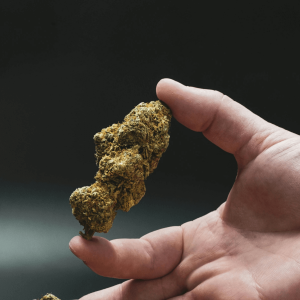
Overall Plant Health
Maintaining the overall health of your cannabis plants is key to achieving a successful harvest.
Several factors influence plant health throughout their growth, including light, nutrients, and water quality. It’s essential to provide a balanced diet that matches their developmental stage while ensuring they’re getting the right amount of light and hydration.
Additionally, keeping an eye on pest and disease management is crucial. Pests like aphids or spider mites can wreak havoc if left unchecked, while diseases such as powdery mildew can stress your plants and diminish yields.
Regularly inspecting your plants allows you to catch any potential issues early, making it easier to implement organic pest control methods or adjust your environment. Healthy plants not only yield better buds but also promise a more potent and enjoyable experience overall. So, take the time to nurture your plants, and they’ll reward you with their bountiful beauty!
Common Growing Mistakes
Growing cannabis can be a rewarding experience, but it’s easy to stumble into some common pitfalls along the way. Here’s a breakdown of typical mistakes you might encounter at various growth stages, along with tips on how to avoid them:
- Overwatering/Underwatering: This is one of the most frequent issues. Overwatering can lead to root rot, while underwatering can stunt growth. Always check the moisture level in the soil before watering, and ensure the pot has good drainage.
- Nutrient Burn: Giving your plants too many nutrients too soon can cause leaf tips to yellow and brown, known as nutrient burn. Start with a light feeding schedule and gradually increase as your plants grow, closely monitoring their reactions.
- Ignoring pH Levels: The pH of your soil or water is crucial. A pH that’s too high or too low can lock out nutrients, leading to deficiencies. Use pH testing kits and adjust accordingly with pH-up or pH-down solutions.
- Poor Light Placement: Too much or too little light can harm your plants. Ensure your grow lights are at the right distance and adjust based on the specific growth stage to avoid light stress.
By being aware of these common growing mistakes and their prevention strategies, you can help your cannabis thrive and ensure a bountiful harvest!
Environmental Factors
When it comes to growing healthy cannabis plants, keeping an eye on key environmental factors can make all the difference. Here’s a look at some important considerations:
- Light Intensity and Quality: Cannabis plants thrive on light. The right intensity and quality of light can stimulate robust growth and strong yields. Ideally, you should use full-spectrum grow lights that mimic natural sunlight, especially during the flowering stage when your plants need more light to develop those beautiful buds.
- Temperature Control: Cannabis prefers a specific temperature range to grow optimally. During the day, aim for around 70-85°F (20-30°C) and slightly cooler at night, ideally between 60-70°F (15-20°C). Extreme temperatures can stress the plants and affect growth, so be sure to monitor and adjust as needed.
- Humidity Control: Maintaining appropriate humidity levels is crucial. During the vegetative stage, a humidity level of around 40-70% is ideal, whereas during flowering, aim to lower it to 40-50%. This helps to prevent mold and encourages healthy resin production.
- Air Circulation: Good airflow helps strengthen plant stems and keeps pests at bay. Use fans to create a gentle breeze, which mimics natural outdoor conditions and ensures all parts of the plant get the fresh air they need. Proper air circulation can greatly enhance the overall health of your cannabis garden!
Genetic Variations
When it comes to cannabis cultivation, genetic variations play a key role in each strain’s growth stages. Different strains can exhibit unique growth patterns, flowering times, and resistance to pests and diseases.
For instance, Indica strains typically have a shorter flowering period than Sativas, which may take longer to mature. Understanding these differences helps growers choose the right plants for their specific setup and growing conditions.
As you select a strain, consider your cultivation methods—whether indoors or outdoors, soil or hydroponics—since some strains thrive better in particular environments. It’s all about pairing the right genetics with your growing style to ensure a smooth and successful harvest.
The Role of Technology
Modern growing technologies have revolutionized the way cannabis is cultivated, making it easier and more efficient for both novice and experienced growers.
Advances in grow lights, such as LED and high-intensity discharge (HID) lamps, provide optimal light spectrums that can enhance photosynthesis and promote healthier plants. Hydroponic systems also allow for precise control over nutrients and water, leading to faster growth and higher yields.
The benefits of using technology extend beyond just equipment; tools for monitoring growth—like digital thermometers, humidity sensors, and pH meters—enable growers to maintain ideal conditions with ease. With these advancements, growers can track their cannabis plants’ vital signs, ensuring they receive exactly what they need to flourish.
Embracing technology not only simplifies the growing process but can also elevate the quality of your final product, making it a valuable asset in any cultivation journey.
Sustainable Cultivation Practices
When it comes to growing cannabis, embracing sustainable practices is not just good for the planet; it can also lead to healthier plants and a better-quality harvest. One of the key techniques for eco-friendly cultivation is using organic fertilizers and pest control methods. By opting for natural compost, biochar, and beneficial insects like ladybugs, you can nourish your plants without harmful chemicals, ensuring a cleaner environment both in your garden and beyond.
Water conservation is another critical aspect of sustainable growing. Implementing drip irrigation systems or rainwater harvesting can help reduce water waste significantly. Additionally, mindful soil management—like rotating crops and planting cover crops—can improve soil health and enhance biodiversity.
It’s also worth mentioning the energy consumption involved in indoor growing. Utilizing energy-efficient lighting, such as LED grow lights, not only cuts down on electricity use but also reduces your overall carbon footprint. Finally, considering local sources for materials and supplies can help support your community while minimizing transportation emissions. By adopting these sustainable practices, you contribute to a greener future while enjoying the rewarding experience of cannabis cultivation!
Conclusion
In wrapping up our dive into the stages of cannabis growth, it’s essential to remember that understanding and embracing the growth stages is crucial for a successful harvest. From nurturing your plants with the right light, temperature, humidity, and airflow to selecting the perfect strain for your setup, these factors play a pivotal role in the plant’s development.
Technology has also transformed the game, making it easier to monitor growth and care for your plants, ensuring they thrive with the attention they deserve. As you set off on your growing journey, don’t hesitate to experiment and learn from your experiences. Every mistake is an opportunity to grow, just like your plants!
So, take a deep breath, prepare your space, and dive into the rewarding world of cannabis cultivation. Whether you’re going for organic methods or tech-savvy solutions, the adventure awaits, and each growing season holds the promise of improvement and discovery. Happy growing!
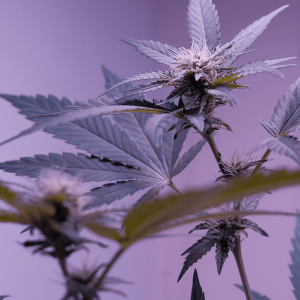
Stages of Cannabis Growth: Frequently Asked Questions
1. What is the best way to choose the right strain for my growing environment?
Choosing the right strain mainly depends on your setup. If you’re growing indoors, you might want to opt for shorter Indica strains that adapt well to confined spaces. For outdoors, Sativa strains may thrive better thanks to their longer growing seasons.
Always consider factors like your local climate and whether you prefer soil or hydroponics, as these can significantly impact which strain will flourish in your garden.
2. How often should I water my cannabis plants?
The frequency of watering can vary based on several factors, including your growing medium, plant size, and environmental conditions. Generally, it’s best to wait until the top inch of soil feels dry before watering again.
Overwatering is a common mistake, so make sure not to water on a strict schedule. Instead, monitor your plants closely and adjust based on their appearance and the moisture level of the soil.

 Rewards
Rewards




